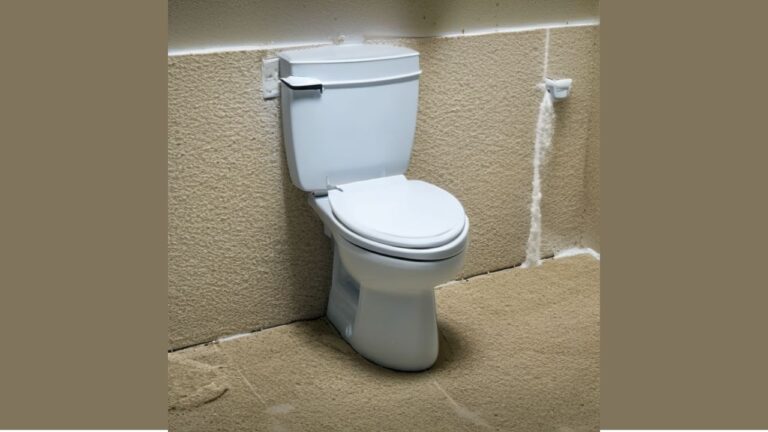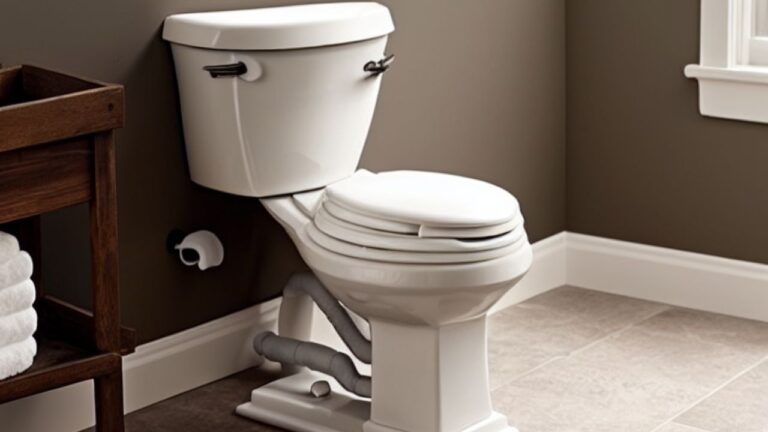A toilet flange is a pipe fitting that connects the bottom of the toilet to the drainpipe and secures it to the floor. It has a cylindrical shape and a flat surface with holes for inserting bolts that hold the toilet in place. A toilet flange can wear out, crack, or break over time, causing leaks, odors, or movement of the toilet. Replace a toilet flange is not complicated but requires some tools and skills.
Here are the steps to follow:
Step 1: Remove the Toilet to Replace a Flange
Before replacing a toilet flange, remove the toilet from the floor. You need to:
- Turn off the water supply to the toilet by turning the valve behind the toilet clockwise. If the valve is stuck or does not shut off the water completely, you may need to turn off the main water supply to your house.
- Flush the toilet and hold down the handle until most water drains from the tank and bowl. Use a sponge, a towel, or a wet vacuum to remove any remaining water from the tank and bowl.
- Disconnect the water supply hose from the bottom of the tank by unscrewing the nut with an adjustable wrench or pliers. Have a bucket or a towel ready to catch any water that may drip from the hose.
- Pry off the bolt caps at the toilet’s base with a screwdriver or a knife. Remove the nuts and washers from the bolts with an adjustable wrench or pliers. If they are rusted or stuck, you may need to spray some penetrating oil or cut them with a hacksaw.
- Rock the toilet gently from side to side to break the wax ring seal between the toilet and the flange. Lift the toilet carefully and place it on a tarp or towel nearby. You may need a helper to assist you with this step.
Step 2: Remove the Old Flange to Replace a Flange
The next step is to remove the old flange from the drainpipe and the floor. You need to:
- Plug the drainpipe with a rag or a T-shirt to prevent sewer gases from escaping and objects from falling into it.
- Scrape off any wax residue from the flange and around the drainpipe with a putty knife or a scraper. Dispose of the wax in a trash bag.
- Remove any screws or nails that secure the flange to the floor with a screwdriver or a hammer. Set them aside in case you need to reuse them.
- Remove bolts or screws that attach the flange to the drainpipe with an adjustable wrench or pliers. Set them aside in case you need to reuse them.
- Lift or twist the flange out of the drainpipe. If it is glued or soldered to the pipe, you may need to cut it with a hacksaw or call a plumber to do it for you.
Step 3: Install the New Flange
The third step is to install the new flange into the drainpipe and secure it to the floor. You need to:
- Choose a new flange that matches your drainpipe material, size, and shape. For example, you should use a PVC flange if you have a PVC pipe. You should use a metal flange if you have a cast iron pipe.
- Choose a new flange that fits inside or over your drainpipe. For example, if you have a 4-inch pipe, use a flange that fits inside 4 inches or over 3 inches.
- Choose a new flange with holes for inserting bolts to hold your toilet in place. The bolts should be long enough to reach above your finished floor level.
- Attach your new flange to your drainpipe using screws, bolts, glue, gaskets, or soldering, depending on your type of connection. For example, if you have a PVC flange and pipe, you should use PVC cement to glue them together. If you have a metal flange and pipe, you should use screws or bolts to fasten them together.
- Attach your new flange to your floor using screws or nails that come with your product or wood/cement screws suitable for your floor material. The screws or nails should go through the holes on your flange’s flat surface and into your subfloor.
Step 4: Reinstall Your new Toilet Flange
The final step is reinstalling your toilet on top of your new flange. You need to:
- Place a new wax ring on top of your flange, ensuring it covers your pipe’s opening. The wax ring creates a watertight seal between your toilet and the flange.
- Lower your toilet carefully over your flange, aligning it with your bolts. Press firmly on your toilet to compress your wax ring and secure it.
- Screw nuts onto your bolts and tighten them evenly with an adjustable wrench or pliers. Do not overtighten them; this can crack or warp your toilet base.
- Reconnect your water supply hose to the bottom of your tank and turn on your water supply valve.
- Flush your toilet several times and check for leaks around your toilet base, water supply hose, and drain pipe.
FAQs:
A toilet flange is a metal or plastic ring that connects the toilet to the drain pipe. It needs to be replaced if it is cracked, corroded, or loose, which can cause water leakage and damage to the floor.
To replace the toilet flange: disconnect the water supply, empty the tank/bowl, unscrew floor nuts, and lift the toilet onto a towel/newspaper. Loosen flange screws with a screwdriver, and pull it out from the pipe.
Choose the right toilet flange based on your drain pipe’s size and material. Measure the pipe’s diameter with a tape or sizing tool. Consider compatibility with PVC, cast iron, copper, or ABS plastic.
To install the new toilet flange or a repair ring, insert it into the drain pipe and align it with the holes on the floor. Then, tighten the screws that hold it in place. You may need a hacksaw or a grinder to cut off any excess pipe or flange material.
Place the wax ring on the flange to reinstall the toilet and press firmly. Lower the toilet over the flange, align it with bolts, and secure it with nuts and washers. Reconnect the water supply, and flush to test for leaks.
Conclusion
Replacing a toilet flange is a DIY project that can save money and improve your toilet performance. However, if you are unsure or uncomfortable with doing it yourself, you can always hire a licensed plumber to do it for you. The steps to replace a toilet flange are as follows:
- Remove the toilet by turning off the water supply, draining the tank and bowl, disconnecting the water supply hose, removing the nuts and bolts, and lifting the toilet off the flange.
- Remove the old flange by plugging the drainpipe, scraping off the wax residue, removing the screws or nails from the floor, and removing the bolts or screws from the pipe.
- Install the new flange by choosing one that matches your pipe material, size, and shape; attach it to the pipe using screws, bolts, glue, gaskets, or soldering, and attach it to the floor using screws or nails.
- Reinstall the toilet by placing a new wax ring on the flange, lowering the toilet over it, screwing nuts onto the bolts, reconnecting the water supply hose, and flushing the toilet.


